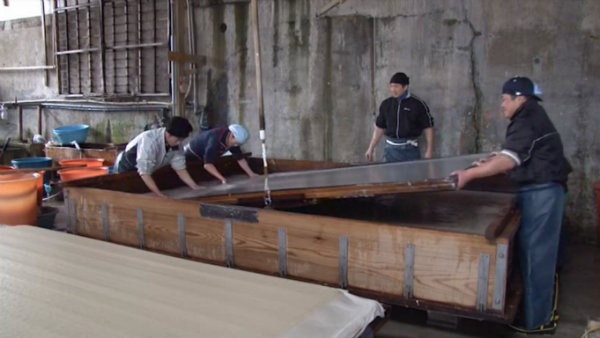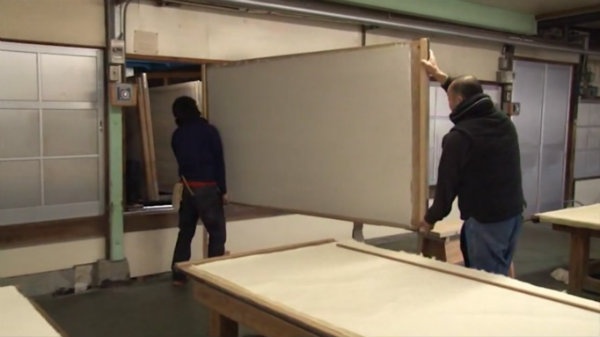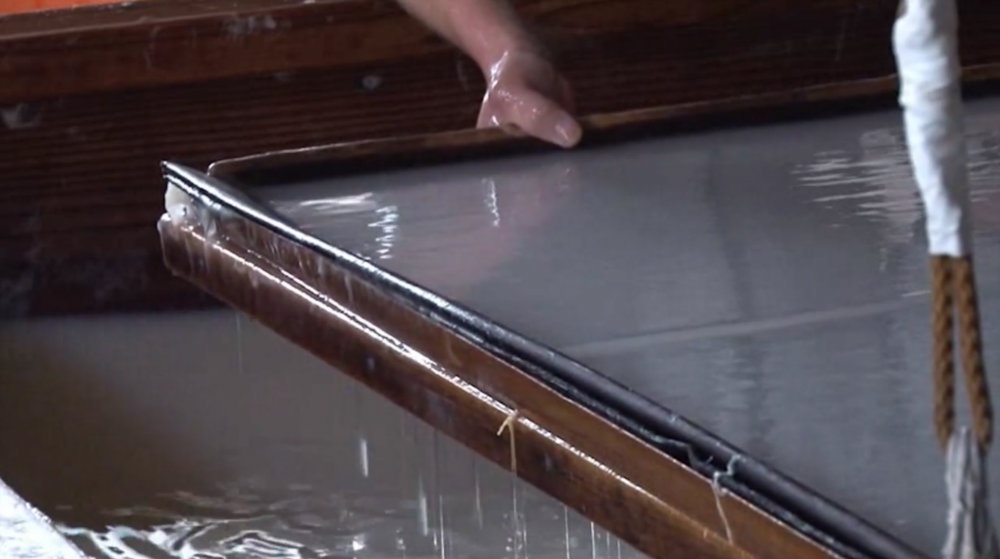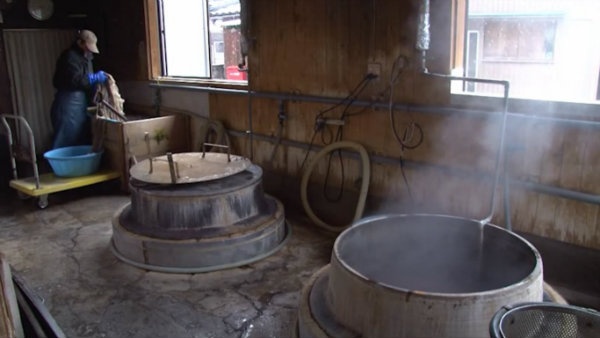The Oldest 'Washi' Production Center in Japan
Inside the stark, chilly workshop, the four artisans conduct their work in almost total silence. Barely a word is spoken as the rhythmic clitter-clatter, swish-splash of the huge suspended frame they operate is rocked back and forth between them like a giant swing and dipped into a rectangular vat filled with a viscous, milky-colored liquid.
By Highlighting Japan
http://www.gov-online.go.jp/eng/publicity/book/hlj/videos/47prefs/fukui.html
As if by magic, within minutes a glistening, membrane-like substance appears on the surface, and the foursome brings the frame to an abrupt halt. With the help of a winching device, the fruit of their labors is carefully transferred to a growing stack of other membranes.
What at this stage look like large, wafer-thin slices of tofu will eventually emerge from the drying rooms at Iwano Heizaburo Seishisho as sheets of washi paper made in a process that dates back over 1,500 years. The workshop is located in Echizen, Fukui Prefecture, which is known as the oldest washi production center in Japan.

http://www.gov-online.go.jp/eng/publicity/book/hlj/videos/47prefs/fukui.html
Echizen washi is made from the bark of paper mulberry, mitsumata shrubs or the gampi tree, which often are mixed with a mucilaginous substance known as neri that is made from the mashed root of the tororo-aoi plant. Artisans fix the mixture on frames to make hand-made paper of varying sizes for diverse uses, from fusuma sliding doors and shoji paper window screens to writing paper and woodblock printing.
The most prized type of washi is hosho, which was traditionally used for writing official documents, and was prevalent until the introduction of Western paper-making techniques around 140 years ago. Heizaburo Iwano (1930-2016) was one of just a handful of craftsmen making the high-grade paper, though mostly for use in fine art such as Japanese-style painting and ink-wash painting.
"It is impossible to reproduce by machine the soft feel of washi," said Iwano, 82 at the time of interview. "Even if you machine manufactured washi paper to the same thickness it would have a different character and weigh more than double that made by hand."
Lightness is a characteristic of Echizen washi—but so too is its durability, a result of the paper's long fibers, said Sugihara. Its variety of applications also distinguishes it from other papers, he added. "Whereas Western paper has a lifespan of 100 to 200 years, washi documents stored in Nara's Todai-ji temple have survived from over 1,300 years ago."





